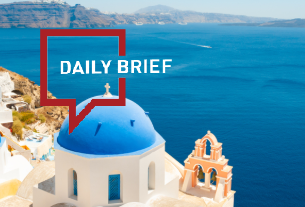ChinaTravelNews - Yongche and Haier Financial Services announced on January 18 they are forming a joint venture mobile platform for car rental service called Haier Yongche Travel and plan to have a fleet of 80,000-100,000 vehicles by 2017.
Yongche evolving from a light investment company
Yongche opted for a light-asset model when it was established in 2010, avoiding storefront rental or vehicles purchase. It was initially positioned as a platform with vehicle information of small hire car companies to facilitate car hire by businessmen.
Under the increasing pressure of government policies, Yongche began to shift from its previous strategy of not purchasing vehicles and turned to Haier Financial Services for funds. Yongche will now head operations in the joint venture while the joint venture company provides the vehicles.
Although it looks as if Yongche is getting away with keeping its light-asset model using Haier to shoulder the expenses and the joint venture to own the fleet, Yongche as the operator still faces the liabilities and risks that come with assets, as the essential difference between light and heavy assets is not only in financing.
Can Yongche step up to the task?
However, just having a lot of cash doesn’t mean a car rental company can successfully manage the highly complex business.
Even international car rental giant Hertz reported losses in 2009-2010 and reported only 3.2% net profit with turnover of US$10.8 billion in 2013.
The question is, now that Yongche has accepted RMB8 billion from Haier, will it become a viable operating a fleet of 80,000-100,000 vehicles (roughly twice the size of CAR Inc’s motor pool) by 2017?
This may not be impossible for Yongche to pull off.
Firstly, it can eliminate the need to maintain storefronts and cut a lot of hassle by operating on contracts with its drivers. This way Yongche can also cut overhead that in CAR Inc’s case, run up to around RMB500 per rental .
Additionally, Yongche can leverage technological development in areas like trip planning and demand forecasting to increase operational efficiency and vehicle monitoring and reduce risks.
Missing pieces to the puzzle
How to purchase its car fleet?
Yongche will inevitably encounter difficulty legally procuring vehicles in the strictly controlled metropolitan areas of Beijing, Shanghai, Guangzhou and Shenzhen even if they have the cash. Even if they manage to obtain vehicles by roundabout means they still must get company number plates according to government policy.
Haier’s motive for choosing Yongche
Another puzzle is why did Haier choose Yongche. Yongche has users and data but CAR Inc. match that and has the experience of running a 50,000 vehicle motor pool to boot. Does Car Inc. have a bigger patron and thus not care for Haier’s largess or is it Haier that thinks CAR Inc. is on the way out?
Direction of official transport policies
For now the government only regulates taxi driver’s licenses and vehicle conditions to ensure the safety of passengers. If it started to directly intervene in every driver issue then it would give the drivers free rein to join the cab associations offering the highest cut. This would be a massive disruption for the taxi industry and disaster for a fledgling car rental.
(Editorial by Tong Li)
(Translation by David)




